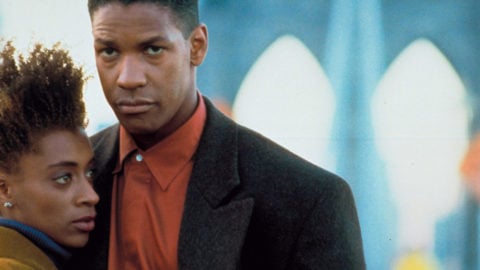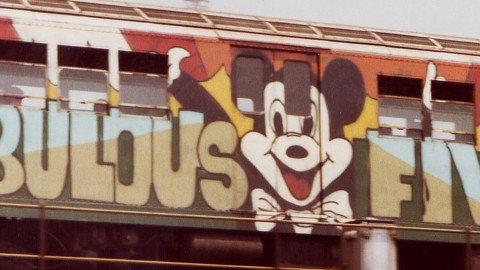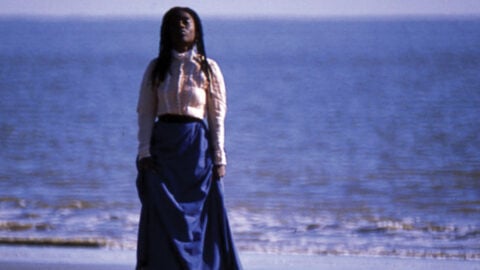Interview: Arthur Jafa
Love Is the Message, The Message Is Death, a seven-minute video of found and original footage undergirded by Kanye West’s “Ultralight Beam,” has become Arthur Jafa’s most popular and critically successful work as a director, celebrated as if it were his first or major work. It isn’t. He is known primarily as a cinematographer, especially for his work on Julie Dash’s brilliant Daughters of the Dust (1991), which earned him the award for best cinematography at that year’s Sundance Film Festival. In 1993, he shot Spike Lee’s Crooklyn and, more recently, Solange Knowles’s music video for “Don’t Touch My Hair.” But Jafa has been a director all along, and has made several short films, including the 2013 documentary Dreams Are Colder Than Death, in which various black artists and thinkers take stock of the reality of black life in America 50 years after Martin Luther King’s “I Have a Dream” speech. He’s also served as a camera operator (and sometimes even a gaffer when needed) on works ranging from Stanley Kubrick’s Eyes Wide Shut to Beyoncé’s “Lemonade” to Ava DuVernay’s Selma.
The success of Love Is the Message, which played on a loop at Gavin Brown’s Harlem gallery from November through January, is not a fluke—the video manages to hit all the right notes while simultaneously establishing its own range. A clip of a gospel singer in rapture juxtaposes a clip of the infamous video of Walter Scott, shot down by a policeman as he ran away. It’s a video made by a director with strong ideas, a precise vision, and a keen sense of rhythm. The attention it’s received is both because of its formal distinctiveness and its timely quality. Love Is the Message speaks of an American blackness that is both relentless and fragile, vulnerable and invincible, coy and expressive.
Jafa is an obsessive collector of images, and keeps files full of images that strike him. In Daughters, the richness of each frame emanates from the textures of the sky, sand, and trees—the blues, browns, and beiges have their own luminosity, coolness, and warmth; each frame is striking, and yet they all work perfectly in concert. In “Dreams,” the talking heads are shot with keen attention to their physical integrity, and significantly, and are never filmed speaking—instead, they move or stand still, silent as their voiceovers do the talking. In Love Is the Message, a catalogue of images becomes a symphonic movement that can be experienced anew over and over again. Film Comment spoke with Jafa about his process, black excellence, his hopes for the future of cinema, and his place in it.
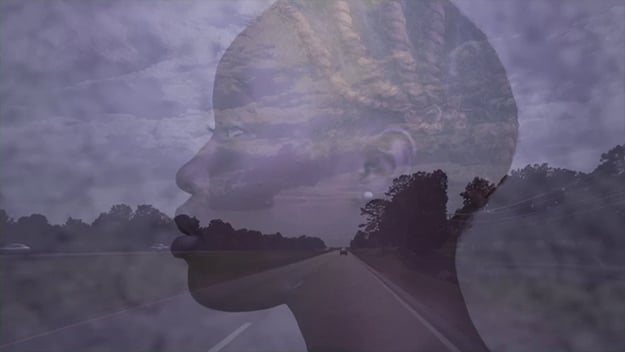
Dreams Are Colder than Death
Let’s talk about Dreams Are Colder than Death. I want to hear a little bit about where that came from, because now that I’ve seen I Am Not Your Negro, and that’s become sort of a strange conversation about how you can make a documentary that’s based off of writing, where thought is the center of the work rather than visual adaptation, I think Dreams Are Colder than Death actually managed to put both on equal footing. I Am Not Your Negro is clearly all about Baldwin, what Baldwin says, and the images are reflective of that, but in Dreams, the images are generative. You have Hortense Spillers talking, or Kara Walker, or Wangetchi Mutu, but the images aren’t in deference to them.
Well, definitely not in deference but also not necessarily in opposition either. There’s just a certain genius to accompaniment, how you actually support other people being expressive, and that’s the jazz thing again. I keep coming back to that: listening and responding, but responding in a way where you still allow the person a certain kind of platform. To a certain degree it goes into this whole space that I circle back on so often, this “usher” work. How do you function as a platform for other people’s expression or articulation, which I think everybody’s sort of doing all the time in jazz. They cede the floor to one another. So I always definitely saw Dreams as usher work. It was always about creating a platform for black folks—as I say, uncommon black folks—and for specialists to voice their feelings about where they were but ostensibly where we are, collectively.
That project initially was engendered when ZDF was doing two nights of programming in response to the 15th anniversary of the March on Washington. They had a gap in the program, where they wanted something that was going to be a look-back at the March on Washington, and they had approached a number of people, who actually mentioned to a producer based in Paris at the time, who had a time constraint because of another project he was working on, and it got offered to an associate of mine, Khalil Joseph, and Khalil handed it off to me. And my first response was like, “Hmm, they want a film about the March on Washington, I think I’ve seen that film before,” you know? “Haven’t I seen it on PBS?” And then they were like, “Well, X, Y, and Z,” and I was like, “Well, I’m not interested in making that film, and I think I’ve already seen that film, but I would be interested in making something about where black people are now.” And I think the way I tried to articulate that was that I would be interested in making a film about the aftermath of the March on Washington. Or, not aftermath, the afterlife of the March on Washington. Which is essentially where we are now. And I wrote a kind of crazy proposal, kind of all-over-the-place, not very linear, you know, these are things that I’m interested in, and the majority of it, there wasn’t the time or the resources to do.
So, as I like to say, it gets reduced to two logs in a fire—it gets reduced to hearing people speak and seeing some things. And sometimes it can be the people, sometimes not. And I’ve spoken in the past about how I had decided that I didn’t want to point cameras at people when I was talking to them. And that was very much informed by Drylongso by John Gwaltney. In the introduction to that book he said something that really has always stuck with me: “I’m convinced that the reasons I was able to enlist in such frank testimonials from folks, this oral portrait of Black America, is because I’m blind.” And I thought about that for years and in conjunction with other things just became convinced and had a theory, hypothesis that when you point cameras at black people, it triggers a certain expressive modality that’s masked. It’s not that it’s untrue—it’s just that you’re under surveillance. The camera functions as the White gaze on a psychoanalytical level. And when Black people operate under the White gaze there are things that you say and you don’t say. It’s a term I’ve been thinking about and deploying recently as discrepancy, and how central discrepancy is to black being and black consciousness. Really it just comes down to being hyperaware of the difference between what something is and what something purports to be. Like the difference between what [white people] say they want and what they really want. And being able to acutely read that was the difference between survival and [death]. In the context of the South—I mean, I would say pretty much everywhere—[you] just [had] to be cognizant of that gap. That gap I think is so central to who we are. It’s so central to the difference between black [Americans] and Africans.
I’m a member of this Practicing Refusal Work group up at Columbia that’s co-chaired by Saidiya Hartman and Tina Campt, really incredible thinkers like Hazel Carby, really, really smart folks. One of the places we landed after two really full days of talking was this space of—you know, I’ve become convinced that there is this moment in which Black people arrive in this space, and the space is saying to you that you aren’t human. And typically what happens is, people are embedded in and shored up by the culture they’re a part of. So all those things you’ve heard growing up about who you are and who your family is and who the larger social context is [made up of], all this kind of stuff shores you up. If someone says you’re human, you know you’re human because you’ve got all this stuff to back it up. But one of the things that happens—and I really think it’s one of the key components of how Africans become Black—has to do with this moment: you come off of a slave ship, and you’re thrust into a context that’s saying you’re not human. Africans were kidnapped, but at a certain point, if you internalize slavery, you’re not kidnapped, you’re just being moved around. There’s that moment, a discrepancy where Africans are told they’re not humans but they know they’re humans because they come from really sophisticated, complex social contexts. But after a generation or two, all that stuff is stripped away, and this purported social context and this civilization you’re a product of becomes mad… The whole thing of breaking up families, it was about not just individuals having some memory of the context that validated that they were human beings, but [making sure that memory couldn’t be] in line with the internal passing of that [information]. At some point it’s really just about discontinuity. The context says, “We are humans, you are not, hence, you are being treated the way you’re being treated.” You don’t have the culture to fall back on, something internal. You arrive at that, “I may not be human, but I’m not what you say I am. In fact, maybe I am human, maybe I am more human than you are.”
But that gap between the social context you find yourself in and what they say you are in, the only thing you have to draw on is internal, or largely internal. It’s like making culture in free-fall. Increasingly, the world is changing, things are happening in the world that the powers that be and ruling forces of the world are not in control of—the Arab Spring would be an example. So they don’t really control what happens anymore. They can’t militarily suppress this shit. Some of it is just erupting. But what they can do is control how we understand it. It’s the spin. And that’s where the whole sentimental audio-visual comes in. Because it’s really about counter-spin. Or making a negating spin. It’s not like protesting so much as it’s saying that this field of information that you’re projecting onto them, black people, people of color, women and LGBT people, is going to be challenged. And maybe, hopefully, if we do our jobs well enough, negated—we will negate those things.
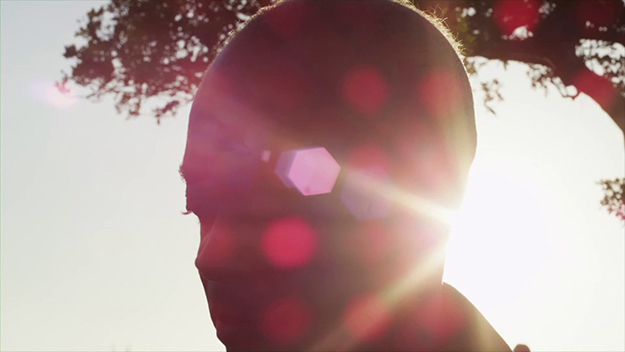
Dreams Are Colder than Death
Is that something you’re actively thinking about when you’re shooting?
No, not so much. It’s the kind of ground against which all the camera choices I make. I think I operate in the space of the affected more than anything. I’m really just looking to be moved. A lot of stuff is just purely instinctual. I like Cassie’s [a woman Jafa shot for the short video “Cassuwary”] face, so I’m interested in seeing what it would look like if it were crying. So for me it was never like, let’s get her into the headspace to cry, I just want to see what a tear looks like rolling down her face. I just also think she’s very beautiful, but sad-looking too, you know what I mean? So a lot of it for me is just about seeing what things look like. I love what my friend and brilliant filmmaker John Akomfrah said: at the end of the day, you’re trying to put things in a sort of affected proximity to one another. And that for me really crystalized what I’m trying to do. Or how I operate—I don’t even know what I’m trying to do, but how I operate is very much a DJ thing, or a hip-hop producer. You take a thing that moves you, it might be just that bit of the song, and you put that bit next to another bit… These things all have their own specific harmonics that resonate in a certain way, and you just try and put that one resonant bit or material object next to another resonant object and they create a kind of harmonic in relationship to each other.
Increasingly I’m coming to believe that I’m really not manipulating the images, I’m manipulating the gap in between the images, which is a more slippery thing to manipulate. Images, I can do that all day and all night, to me it’s just about seeing what the image is doing, taking this frame versus that frame, putting them next to each other, there is something kind of mechanical about it. But the part that’s not mechanical, the part that’s more quantum in a sense is like, what happens when you put this next to that and it creates that immaterial thing in between. In a sense, the images to me are like the banks of a river. That’s just about trying to control this flow. It’s the flow in between the images that I think I’m mostly trying to manipulate. And I think that’s true of Dreams Are Colder than Death, and it’s particularly true of Love Is the Message. But again it really comes down to: you take a resonant thing, a thing that seems true, or if not true troubling or provocative, and you put it next to another thing. And for me, in Dreams Are Colder than Death, it really started out with people’s voices and people talking. And the images came afterwards but I remember the first night we were editing, we were just editing the sound, we didn’t touch the images at all. It was basically just doing a really close reading of people’s conversations. Cutting out the things we didn’t want and leaving in the things we did want. And we ended up with 40-something minutes. And I said [to my assistant editor], LaShawn [McGhee], “Hey, I’m going to hit the road, but if you wouldn’t mind sending me an mp3 of what we did that would be great.” She sent it to my phone, and my phone is hooked to the Bluetooth of my car so while I was driving it pops up on my car and just starts playing, so I listened to the entire thing while I was driving home. And I thought it was kind of mesmerizing. And I pulled up just before it ended but I stayed in my car for the last five minutes, and I remember thinking, we’re onto something because we haven’t even started fucking with the images yet, and this shit completely held my attention. So then it freed the images up to have their own autonomous articulation, or to do that same thing autonomously.
So if you got one layer of objects in affective proximity, and now you’ve got a completely different layer of objects, it’s like two strands of things that are functioning in affective proximity, and then those strands start functioning vertically in affective proximity from one another, and all that stuff is purely accidental. Which is why I think it’s fresh, too, because it doesn’t feel programmatic, it doesn’t feel premeditated. It’s got a certain kind of volatility about it. I think that kind of volatility lends itself to things being seen while they don’t exhaust themselves. It’s operating outside of the realm of what you can consciously control. So that’s something I’m very committed to trying to figure out how to factor in. Because really it’s just a part of black methodology. It’s part of Black methodology so it really doesn’t matter if I’m doing something that’s essentially a documentary like Dreams or something like Love Is the Message, which is essentially a found footage film, or a narrative feature. The question is how do you bring these things to bear.
So what is your relationship to narrative in that sense?
Mostly theoretical. [Laughs] I mean, look, I grew up looking at movies, I didn’t grow up looking at documentaries or things like Love Is the Message. I grew up looking at movies. Mostly science-fiction and horror films. Even the whole notion of the science-fiction film itself becomes problematized when you put a Black person in the subject position, because, it’s like a Western if you’re a Native American. You know what I mean? You’re an object not a subject in the equation, so as soon as you factor yourself into it as a subject and not just an object, or maybe not a subject or object but something else altogether, then one’s relationship to the paradigm, the equation that is a Western, or a science-fiction narrative starts to actually resonate or vibrate in some different types of ways.
Nobody invented narratives—everybody has narratives. You don’t even need a culture to have narratives. When you have narratives, you have a culture. Narratives precede culture in a sense. It’s like, when we have collective narratives, we say that starts to form culture, but essentially, it’s just a series of narratives. People tell about themselves, about the people they know, and then you compare those narratives of the people you know versus the people I know, how our narratives are in agreement or in disagreement, or form some kind of Venn diagram. This is how culture is made, so, my relationship to narrative is, like a said kind of jokingly, somewhat hypothetical in cinematic terms, but in practical terms, it’s the same things as I say over and over again, like my mantras, like the music, like I said before. I want to make narratives like the music. And that’s both very specific and also open-ended. It’s not programmatic, it’s not diagnostic. It’s got to do X, Y, and Z, but it’s not telling you how to do X, Y, and Z.
That remains an open question.
Yeah, that remains an open question.
Because for even the most so-called experimental filmmakers who are making narrative films, there’s still this idea that narrative has to be X, rather than narrative is a structure under which I can work openly, or within which I can do what I want. This is in American films—it’s different elsewhere.
Right.
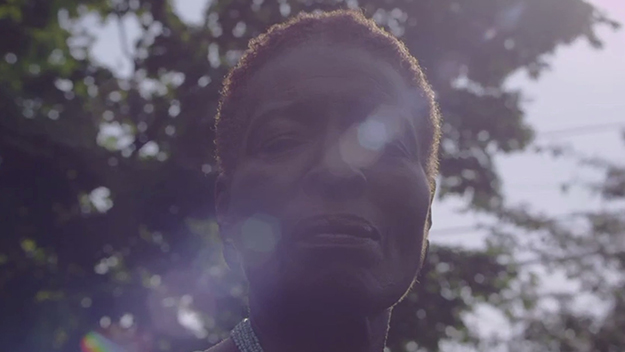
Dreams Are Colder than Death
That’s interesting to me. I mean, I wonder if that was part of what made you feel like you have to be in opposition to working in this hierarchical structure, because of what it means to be a cinematographer in the American film industry.
It’s connected but I don’t feel like I’m in opposition to anything. I’m trying to be self-determined—this shit is in opposition to me. I’m not out here looking for shit to oppose, or to be opposing me, I’m just out here trying to do me. Like Elissa and I, in our Creative Time presentation, she was like, we aren’t out here trying to be geniuses. We’re not out here trying to be producers. We’re trying to be emanations of the culture. To me that’s the most radical formation, to be an emanation of the culture. Which means, in the end, that we would be driven to approach whatever we do in a certain fashion. I’m not trying to be in opposition to anybody, I’m just trying to say, “Look, I don’t want to have an overseer.” I don’t want to work in a structure wherein one person is at the top dictating what everyone else is doing, and then everyone under them is just a cog in an automaton machine. It doesn’t mean the opposite, that I don’t want any structure, or any leadership, it’s not what it means at all, it just means that I don’t want to be collapsed into binary oppositions with what you do, just based on the fact that I don’t operate like that. It means that just because I don’t want what you do, it doesn’t mean I want the opposite of what you do. Because that’s still trapping me in this sort of thing. So if I don’t want your idea of narrative, it doesn’t mean I don’t want to make narrative films, it just means I don’t want to make your kind of narrative. So if I don’t want your kind of order and structure it doesn’t mean I don’t want things that have order and structure and hierarchy, I just don’t want your kind of hierarchy. I want the form that’s best suited to the kind of expressive proclivities that one might associate with Black folks. But those expressive proclivities don’t proceed us. We’re not out here trying to follow the aesthetic.
You’re not serving something.
Yeah, we’re not serving the aesthetic, the aesthetic grows out of the existential circumstances that we find ourselves in, what there is internal pressure to express. That pressure is going to demand that we create modalities that are suited to expressing those things. Like any other modality, like opera, or the novel, or anything else, you know? It’s not like we’re trying to rise to the level… Even when I set up music as this sort of paradigmatic thing, it’s not like at the end of the day I’m just saying that we want to make cinema just like the music. It’s really specific aspects of the music I’m interested in. Like I said, power, beauty, and alienation—that’s not all that Black music does, but those are very critical points of departure and what Black cinema could do, and what it should be expected to do. But if we could figure out how to transpose our values, philosophical, spiritual, aesthetic, onto the artifact, onto the apparatus, maybe more than the artifact, because the artifact should be a product of the apparatus.
And so, to speak pretty literally, what does creating that modality look like? Or what does providing for that space look like? Because you resisted the idea of a collective in the sense that most people understand it.
Totally.
So, where do you go from there?
That’s because I resist certain conceptions of working collectively. You use the term collective and it’s got a whole lot of baggage. It implies a lot of stuff I don’t necessarily agree with. I mean committee decisions, whether they’re progressive or not progressive, I’m just not interested in it. I don’t think jazz is an example of that. It’s like what I said before, like in hip-hop, we have to be really careful to swallow in whole these structures of phenomena. Like, for example, the ego. Individual versus the group: if your ego is too big, you can’t be part of the group, you can’t work with the group. There is only enough room for a few egos in certain kinds of configurations so we got to get rid of the ego. Or, we can’t work as a group. We all are familiar with these notions. But it just don’t work like that for Black people. I don’t believe it. I always point to hip-hop as the best example of it. You’ve got the biggest egos on the face of the earth, but when’s the last time you saw an album where there was one person rapping on a single cut? It’s anomalous when you see it. It doesn’t matter if it’s Jay-Z, LL Cool J, it doesn’t matter who it is. There’re always other people on the damn thing.
Well, it’s that whole idea around black excellence that came up in hip-hop: we’re going to fight each other over who’s the best but we’re all going to be here.
It’s a different ego formation. It’s not the lack of the ego, which would then put us into this collective model. It’s not that. I’m not interested in that, personally. It’s like you pointed out before; oftentimes, the difference between these things is so minor. I think we have to be really careful about swallowing the supposed dichotomies whole. The thing is to always rethink, and to look at all the models that are available, but to not get stuck. I’m really big on Ozu, not because I want to substitute Hollywood for Ozu, you know what I mean? It’s because Ozu is evidence that there are multiple possibilities of systematics in terms of how you approach cinema, or narrative, or whatever it is you’re trying to do. There’s not one way of doing it.
And that is, as a matter of fact, what I sometimes term “the upside of underdevelopment.” Because I think, cinematically speaking, if we’re so underdeveloped, we shouldn’t be burdened with having to maintain legacy systems. You go straight for the most radical, most pragmatic, the dopest shit that’s out. With no regard to whose feelings we’re going to hurt, or who we’re going to put out of work, or who’s going to lose tenure, or that kind of shit. You know what I mean? Like we ain’t got nothing, so let’s just go for the freshest shit. So if the freshest shit is post-[production] stuff like all the films they did in Italy, or if the freshest shit is Michael Lee using non-actors, let’s just go for that. We can make the thing we want to make that’s ideally suited to get up on the screen the kinds of—not just performances, because maybe we don’t want performances—the kinds of renderings that we want to get up there. I always think in terms of apparatuses. And not just in terms of doing it because I’m some geek or something like that, just because I want to make fresh shit. The methodology, the apparatus, should create space. The most amount of space so that people can actually be creative and be fresh and be inventive, and come up with things that, for us at least, are worth replicating, worth repeating.
Are we just repeating because someone said that’s what we’re supposed to be doing? Three-part structure, narrative structure—that’s cool, there’s nothing wrong with it, but like, it’s just one thing you could do. The human brain is not so narrow that that one structure is the only structure that can deliver a satisfying cinematic experience. I don’t believe that. I will never believe that. It’s not as reductive as that. And if you think it’s as reductive as that, that means that you brainwashed yourself into thinking that, and that you’re not allowing the space for other people to show you what’s possible.
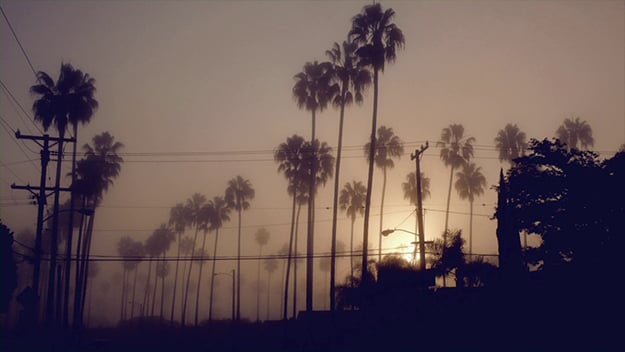
Dreams Are Colder than Death
So where does people’s openness as viewers, as audience members come into this? I have a hard time making heads or tails whether the common idea of what an audience has the patience for is real or constructed or there is something in between. Because I talk to friends who are like, “Oh I saw this film,” and they’re smart people who look at art all the time, and they go on, “but I just had trouble…” Or they say, “I go to work, I’m tired, so I want to see something that I get.” And so to what extent do you have to contend with this idea that people might not be open? You might have created this system of openness in which you have the space to make something, but how open do people have to be in response? And how much do you have to care?
People don’t have to be open. And you can’t make them be open. But I never feel like the burden is on the audience. I think the burden is on the work. That’s how I operate. I feel like the burden is on the work. I don’t think it’s the limitation of the audience, I think it’s the limitation of, is your work powerful enough. It’s got to mesmerize people first of all. It’s just got to stop them. Make them pay attention. And then maybe you might be able to say something here or there. I mean everything is a process, it’s not just like you made some work that just sort of changed people in the moment, but like you made a thing that made a person sit up and take notice, and the next time they come to see something like that, they’re predisposed to it. Or at least they have a certain level of openness to it, and then you can kind of go further. But, it’s also why I think, like, and as far as Black filmmakers are concerned, it’s important for us to understand it as, you know I resist the term ‘collective.’ Like Robin Kelley, the historian, brilliant, obviously, he made a really profound distinction, he said that, we’re generally taught to think of the Civil Rights Movement as a mass movement, but it was never a mass movement, it was an aggregate movement that had mass implications. But that’s a really critical distinction, because also, what it means is that moving forward happens in little small steps, but occasionally big steps. And those [big steps] don’t happen because everybody was on the same page. [They] mostly happen because a few people were on the right page. And as that right page starts to take on a kind of inevitability, starts to take on a kind of undeniability, everybody else is just kind of on board. It’s like Noah’s Ark—you’ve just got to build the ship. The rain starts to rise and those motherfuckers jump on board.
Yeah, I mean it goes back to the “freshest shit” because people know what it is, and so they have to get behind it.
Yeah, or they have to get left behind. That’s how I feel about it. I don’t feel like it’s every about forcing people to do anything. I don’t even want all of these motherfuckers trying to do what I’m trying to do. I want most of them to be the corny-ass motherfuckers they’re going to be until they die. You know it’s like Bob Dylan said: “Something’s always going on, and you don’t know what it is, do you, Mr. Jones?” There’s something going on, and you don’t know what it is, and that’s how I want it to be, you know? I want to be in a privileged position to benefit from the kinds of things I’m actually trying to be a part of innovating or developing. It’s like, you want to be as innovative as Apple, but you don’t want everyone doing your shit. So yeah, just let them keep doing their corny-ass, 19th-century shit, and we can keep going with trying to figure out what the 21st century is going to look like.
Los Angeles Filmforum at MOCA will screen Dreams Are Colder Than Death on May 11. The Serpentine Sackler Gallery will hold the first UK retrospective of Jafa’s work from June 8 to September 10.
Cassie da Costa is an editorial assistant and video producer at the New Yorker.



